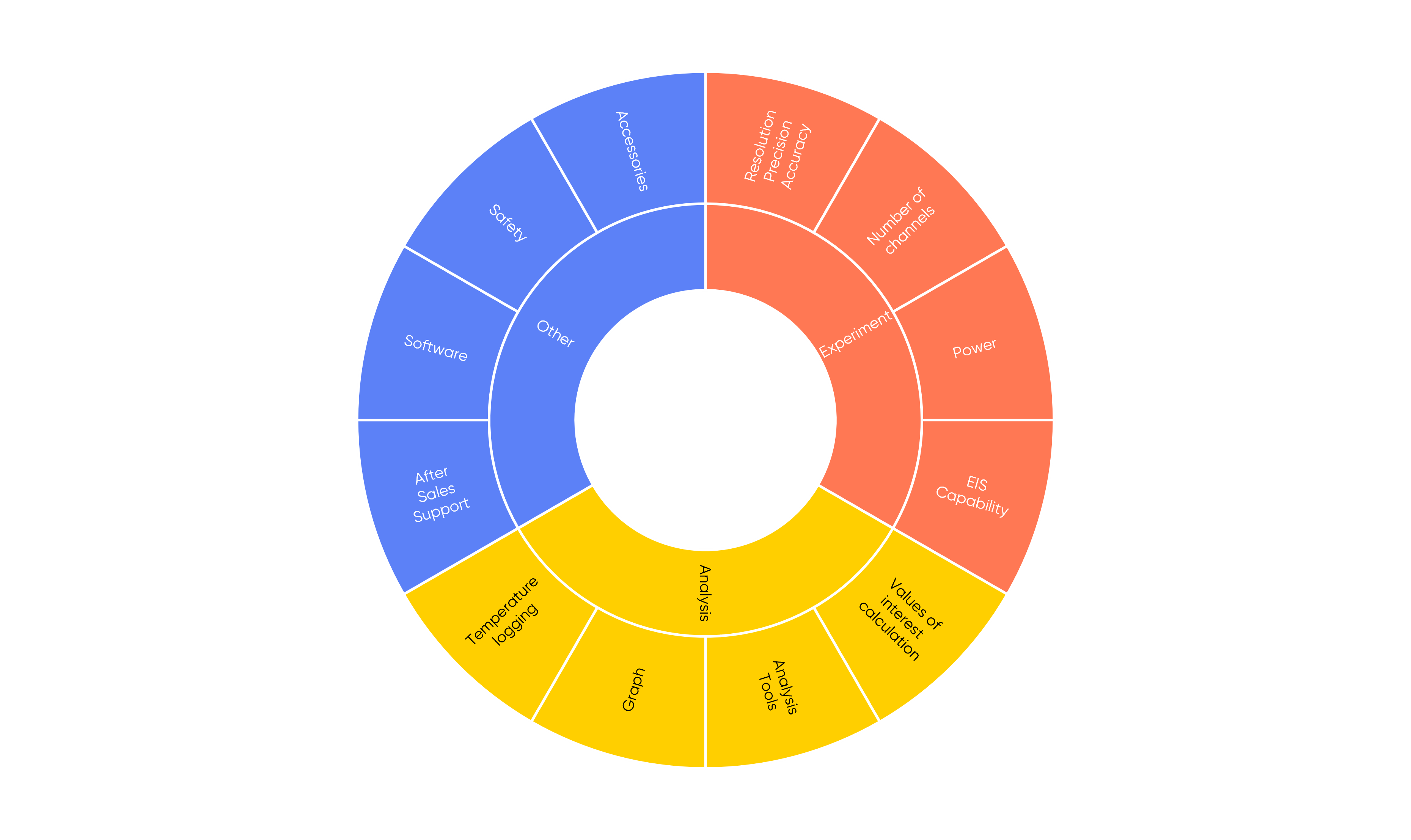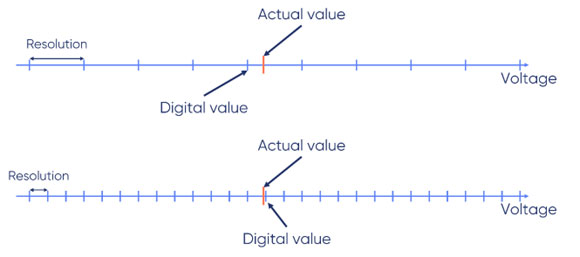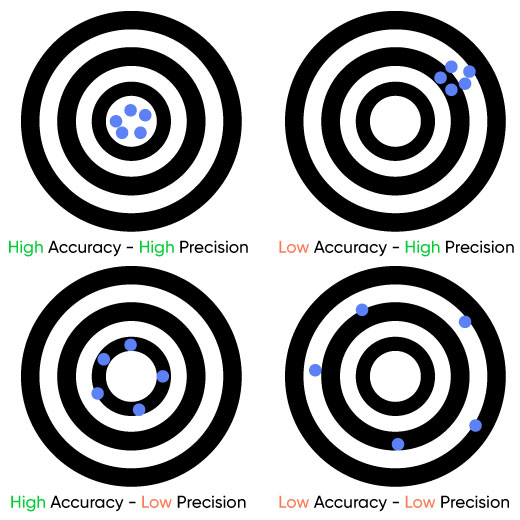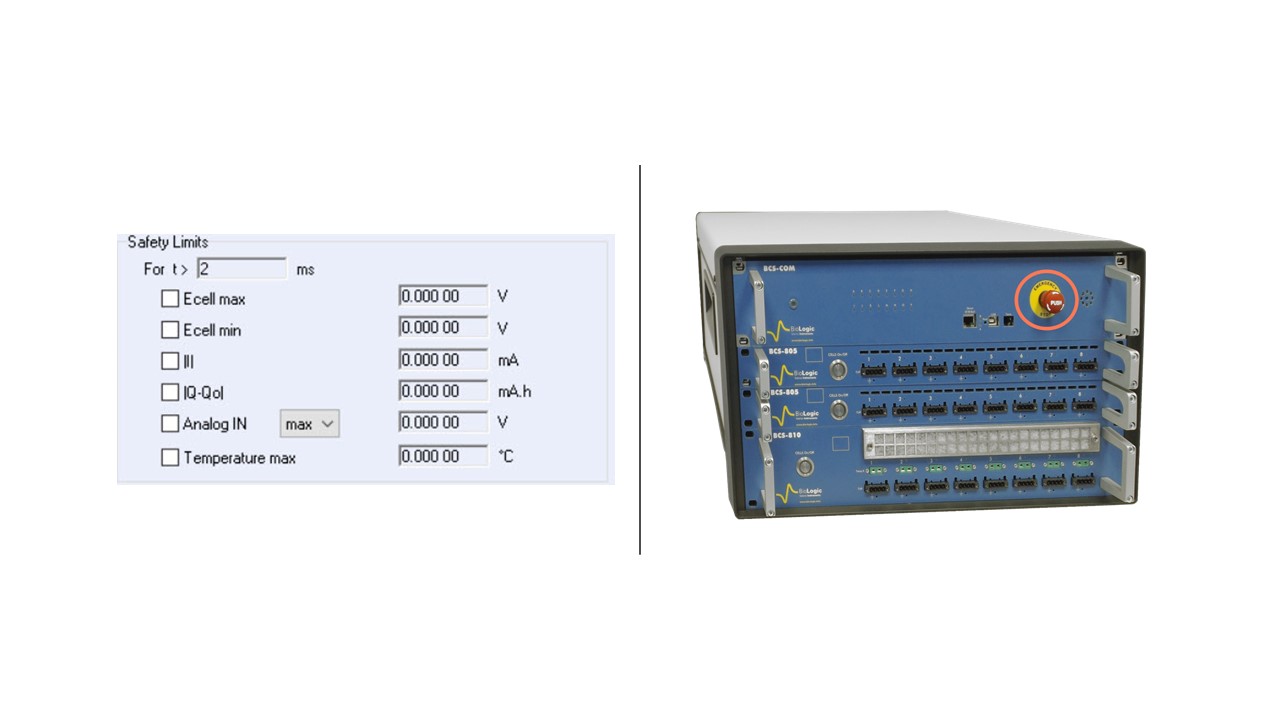What is a battery cycler?
Latest updated: February 12, 2025Development of battery cyclers in science and industry driven by strong expansion of the battery market
When Alessandro Volta developed the first primary battery, the voltaic pile, in 1800, little did he know the impact that his invention would have on society in the years to come. Volta’s simple pile consisted of little more than alternating discs of zinc and copper, with salt-soaked cloth (NaCl aqueous solution) as a separator. The first batteries were composed of several voltaic piles.  Figure 1: Schematic of the first Voltaic pile. Over 200 years later, batteries play a pivotal role in the personal and professional lives of millions across the globe. Rechargeable (or secondary) battery science has seen exponential growth over the last half-century, since the invention of lithium-ion technology, and has been a welcome addition to the standard stable of battery chemistries that were limited to lead, Zn-MnO2 (Leclanché “pile”), nickel-cadmium, and nickel-metal hydride.
Figure 1: Schematic of the first Voltaic pile. Over 200 years later, batteries play a pivotal role in the personal and professional lives of millions across the globe. Rechargeable (or secondary) battery science has seen exponential growth over the last half-century, since the invention of lithium-ion technology, and has been a welcome addition to the standard stable of battery chemistries that were limited to lead, Zn-MnO2 (Leclanché “pile”), nickel-cadmium, and nickel-metal hydride.
The socio-economic impact of batteries is vast. According to the Grand View Research database, the size of the market for batteries was estimated at more than 100 billion USD in 2020. Energy storage solutions that focus on batteries are considered to play a key role in the fight against global warming and in replacing fossil fuels.
Battery cyclers: A vital tool for developing the energy storage solutions of the future.
Battery cycling is the operation by which a battery is tested over a period of time, through continuous charging/discharging. This process ages the battery cells and allows various parameters to be studied, to understand the phenomena at stake and estimate the duration of battery life. For example, full discharges of the battery can be regularly performed to monitor battery capacity. Battery capacity is a major parameter, as it describes the total amount of charge that can be stored in the cells. It is used to calculate the State-of-Charge ($\mathrm{SoC}$) and the State-of-Health ($\mathrm{SoH}$) of the battery, in order to gauge its performance. This data is constantly examined, with a view to improving the quality and autonomy of the battery during development of the cell, or simply to ensure that battery quality meets the desired standard during manufacturing.
Battery testing equipment can also provide an opportunity to study internal resistance, thanks to current interrupt or impedance methods. This data indicates the evolution of degradation processes in the battery.
The fact that no battery chemistry is the same is another reason why battery cyclers play such a key role. Indeed, there is no “one-size-fits-all” solution when it comes to battery design – yet there exists a myriad of different applications, each requiring a battery fit for that purpose. Battery testing equipment plays a pivotal role in helping to characterize these different batteries, analyzing their function, and providing key data that can be used to further improve them or test their quality.
What is the principle of a battery cycler?
The general principle of a battery cycler is fundamentally the same as a potentiostat / galvanostat. It is designed to apply a current and measure a voltage (galvanostatic mode) or the opposite function (potentiostatic mode). If they have impedance options, they can handle DC and AC signals.
The principle is the same, but the ultimate objective is slightly different. Consequently, the selection criteria are also different and need to be carefully considered. The explanations below will help the user understand the importance of each parameter.
What should I consider when investing in a battery cycler?
The schematic below outlines several factors that are critical to the functioning of a high-performance battery cycler. These can be broken down into three key sections: experimental characteristics, analytical characteristics, and additional factors relevant to battery cycler safety and performance.  Figure 2: The different factors that should be considered when purchasing battery testing equipment.
Figure 2: The different factors that should be considered when purchasing battery testing equipment.
Experimental characteristics of battery cyclers
Will the battery cycler be suitable for my application?
The benefits of multiple channels
One of the main challenges in the battery testing field is time management. Most procedures include aging the cells through cycling. As the name suggests, battery cyclers are designed for this purpose. However, these types of studies are extremely time-consuming. A single experiment can last for months. It is often impossible for users to wait until the test is complete before running the next one. This is why having several channels that can be run independently at the same time offers a major advantage. The multi-channel setup available on most modern battery cyclers enables users to work on different projects, or batteries, at the same time. The BioLogic BCS-9xx module comes with eight channels as standard. It is easy to add other modules to increase the number of channels in the cabinets. The battery testing equipment can be used for testing a range of different batteries and battery types. In this sense, each battery cycler channel can be considered as an individual instrument in its own right.
An added advantage of this type of battery cycler architecture is that it optimizes workflow. Battery cycling involves the implementation and management of repetitive measurements to emulate the normal working conditions of a battery. Multiple channels help the user achieve this objective faster and more efficiently.
Power: The right tools for the job
As is the case for potentiostats, there is no “one-size-fits-all” solution for electrochemical measurement in battery cyclers. The battery cycler needs to have a specification suited to the battery cell, pack, or module it is testing. This explains the wide range of battery testers available on the market.
For this reason, three core modules are available in the BioLogic BCS-900 series. The BCS-905 is the smallest battery cycler in the range, with a maximum current of ±150 mA per channel, making it suitable for small batteries such as coin cells. The BCS-910, with a maximum current of ±1.5 A per channel, is a medium-size battery cycler, ideally suited for R&D laboratories and pilot lines. Finally, the BCS-915, the workhorse of the battery cycler family with its maximum current of ±15 A per channel, is ideally suited for high-power tests and offers the possibility of connecting channels in parallel to reach ±30, ±60 or even ±120 A.
The multitude of current ranges offered by BioLogic battery testing equipment is a key factor of its versatility.
A variety of user profiles
Battery testing has a broad range of applications. Users need to understand their profile in order to focus on the right specifications. Obviously, some users may find themselves in two, three, or even four different user profiles, which is why battery testing equipment needs to be modular and responsive to a vast spectrum of challenges. The various profiles are summarized in Figure 3 below.
Performance and maximum current (see paragraph on power above) are always of key importance. They are especially valuable for life cycling and device simulation applications.  Figure 3: The different user profiles and the types of experiments they need to run. Resolution, precision, and accuracy, for example, are three factors that should be considered carefully, particularly for R&D and advanced analysis. These parameters are described in the article and illustrated in Figures 4 and 5 below.
Figure 3: The different user profiles and the types of experiments they need to run. Resolution, precision, and accuracy, for example, are three factors that should be considered carefully, particularly for R&D and advanced analysis. These parameters are described in the article and illustrated in Figures 4 and 5 below.  Figure 4: Schematic explaining how resolution can affect control and measurement. Above: Low resolution – Below: High resolution
Figure 4: Schematic explaining how resolution can affect control and measurement. Above: Low resolution – Below: High resolution  Figure 5: Schematic explaining how accuracy and precision can affect control and measurement.
Figure 5: Schematic explaining how accuracy and precision can affect control and measurement.
Does the battery cycler have an EIS option?
Electrochemical impedance spectroscopy offers a fantastic opportunity for battery testing equipment users who need information on the phenomena at electrode interfaces or internal resistance for example. This article explains how useful EIS can be for battery characterization. The MPG series offers EIS capability as an option for each channel, with a frequency range from 10 µHz to 100 kHz. To provide EIS capability at a lower cost for BCS users, the EIS option is shared across all channels of the module. The frequency range in this case covers 10 mHz to 10 kHz.
Analysis characteristics: a combination of high-quality software and hardware
Will the battery cycler be able to perform the analysis I need?
Value of interest calculation
Battery cycling is all about the control and measurement of current, voltage, and time. Using these data, values of interest such as electric charge and energy can be calculated. The key question is how these values of interest are calculated. Due to the sampling rate, there is a loss of information between the data collected by the hardware and the data recorded by the software. Consequently, hardware calculation is more precise than software calculation, and hardware analysis provides great added value for the user.
The embedded hardware in BioLogic battery cyclers records high levels of points (every 2 ms), and calculates in real-time values such as charge or power for example. This does not affect the battery cycler`s performance, as only the points required by the sampling rate are sent to the software. As a result, points and calculations are extremely precise without overloading data files.
Analysis and graph tools
Exporting data to perform analysis or plot graphs on other software can be laborious and very time-consuming. Ideally, experiments, representations, and analyses should be performed using the same software, to avoid exporting/importing data.
Plotting the graph of interest directly on the software performing the experiment provides a better instantaneous overview of what is going on in the system.
Having the same software for experiments and analysis also means that analysis can be performed while the experiment is running. It is an advantage, in the case of long-time experiments for example, to be able to detect if anything is wrong in the system, or start exploiting the results without having to wait for the experiment to be completed.
Finally, all-in-one software solutions require less training time for new project collaborators, as they only need to learn to use one software solution rather than two – one for experiments and one for analysis.
EC-Lab® and BT-Lab® Suite are all-in-one software solutions that ensure experiment running, graph plotting, and analysis.
Temperature logging
Recording the temperature of the device being tested during an experiment is important for some performance studies, as well as for the safety of the test itself. An increase in temperature may imply thermal runaway of the device and be a sign that the experiment should be stopped. Thus, the availability of temperature recording is a parameter that needs to be considered when choosing battery testing equipment.
BioLogic instruments provide temperature recording using PT100 probes (MPG series) or K-type thermocouples (BCS series).
Other characteristics to be aware of
Are there any safety features?
Battery testing is not a non-risk experiment. It requires safety precautions to avoid any incidents. Temperature logging, mentioned in the paragraph above, is an example of something that should be considered in relation to experiment safety. Being able to stop the experiment if temperature, voltage, or charge are too high is vital, because battery testing often takes place over a long period of time and the user cannot always be present to supervise key parameters.
An emergency stop is a prerequisite for this type of test. The emergency stop is a red mushroom button that stops all tests running on the modules and opens all electric circuits to prevent the devices under test being powered up.  Figure 6: Safety features of BioLogic instruments. Left: Safety limits – Right: Emergency stop.
Figure 6: Safety features of BioLogic instruments. Left: Safety limits – Right: Emergency stop.
Is the software complete and user-friendly?
It may seem contradictory to have complete software that simultaneously enables setting up experiments with a high level of freedom and access to all experimental parameters, plotting customized graphs, and perform analysis , while at the same time being easy and instinctive to use. Yet this is something that is crucial for efficiency and actually not completely incompatible. You just need to find the right software.
Why provide a complete software solution? Users need to have access to all the parameters possible for the experiment to suit their exact needs, and to have full control of their experiments. They also need to be able to plot and analyze their data as mentioned above.
Why provide user-friendly software? You can waste inestimable amounts of time trying to run software that is not user-friendly and this can be very frustrating. Handling the software should not be where users spend most of their time!
After-sales support: is your supplier in it for the long term?
When selecting battery testing equipment, it is important to consider the maintenance levels required to keep the instrument in good working condition. If an instrument is high-maintenance, users may become frustrated with the effort required to continue running routine experiments. Even for low-maintenance, high-quality instruments, consideration should be given to what happens if something goes wrong. It is important to have a high level of technical support for users. This support also needs to be responsive to issues when they arise, and handle repairs efficiently. Selecting an instrument with a low level of support is not a problem when everything is working well, but if something goes wrong, it could result in costly downtime later on.
After-sales support does not just cover the response when things go wrong, it also includes anything that helps users get the most out of their instruments. The same high level of technical support that exists for solving any issues, should be applied to practical questions from users. For those looking to perform more than just basic experiments, it is essential to have access to media, including notes, videos, or blog posts, which describe more advanced uses. Once a battery cycler has been purchased, the level of support available to users can have a real impact on its effective long-term use.
Conclusion: Your battery cycler is an important investment – choose wisely!
Although not necessarily exhaustive, this article has addressed some of the key aspects of battery cyclers that should be considered when purchasing. These include obvious factors like available features and instrument specifications, as well as less obvious factors such as the after-sales support available and the people who will be working with the instrument.
If you would like help in choosing your battery testing equipment, why not contact your local BioLogic representative.
| Battery Cycler considerations | BCS series | MPG series | ||
| Will the battery cycler be suitable for my application? | YES – For academics and industries, the BCS series offers high-quality and high-throughput performance, with 3 possibilities of max current. | YES – For R&D and academics, the MPG series offers precision, stability, and high-end analysis with a faster acquisition system and the possibility of connecting a reference electrode. | ||
| Does the battery cycler have an EIS option? | YES – A sequential EIS option is available for the BCS series. | YES – A simultaneous EIS option is available for the MPG series. | ||
| Will the battery cycler be able to perform the analysis I need? | YES – Values of interest are calculated in BioLogic instrument hardware. EC-Lab® and BT-Lab® Suite software can run experiments, plot graphs, and perform analysis. Temperature logging is also available with K-type thermocouples (BCS series) or PT100 probes (MPG series). |
|||
| Are there any safety features? | YES – Safety limits and emergency stop. | |||
| Is the software complete and user-friendly? | YES – BT-Lab® Suite software. | YES – EC-Lab® software. | ||
| Customer support? | HIGH – Large online database of hundreds of support documents including user manuals, technical notes, application notes, tutorials and support videos also available. BioLogic Learning Center includes over 100 articles to help you get the best out of your instrument, together with more general, scientifically focused papers that will cover key scientific themes in broader detail. Online and telephone support available. | |||
Explaining What a Battery Cycler Is: Video Guide




